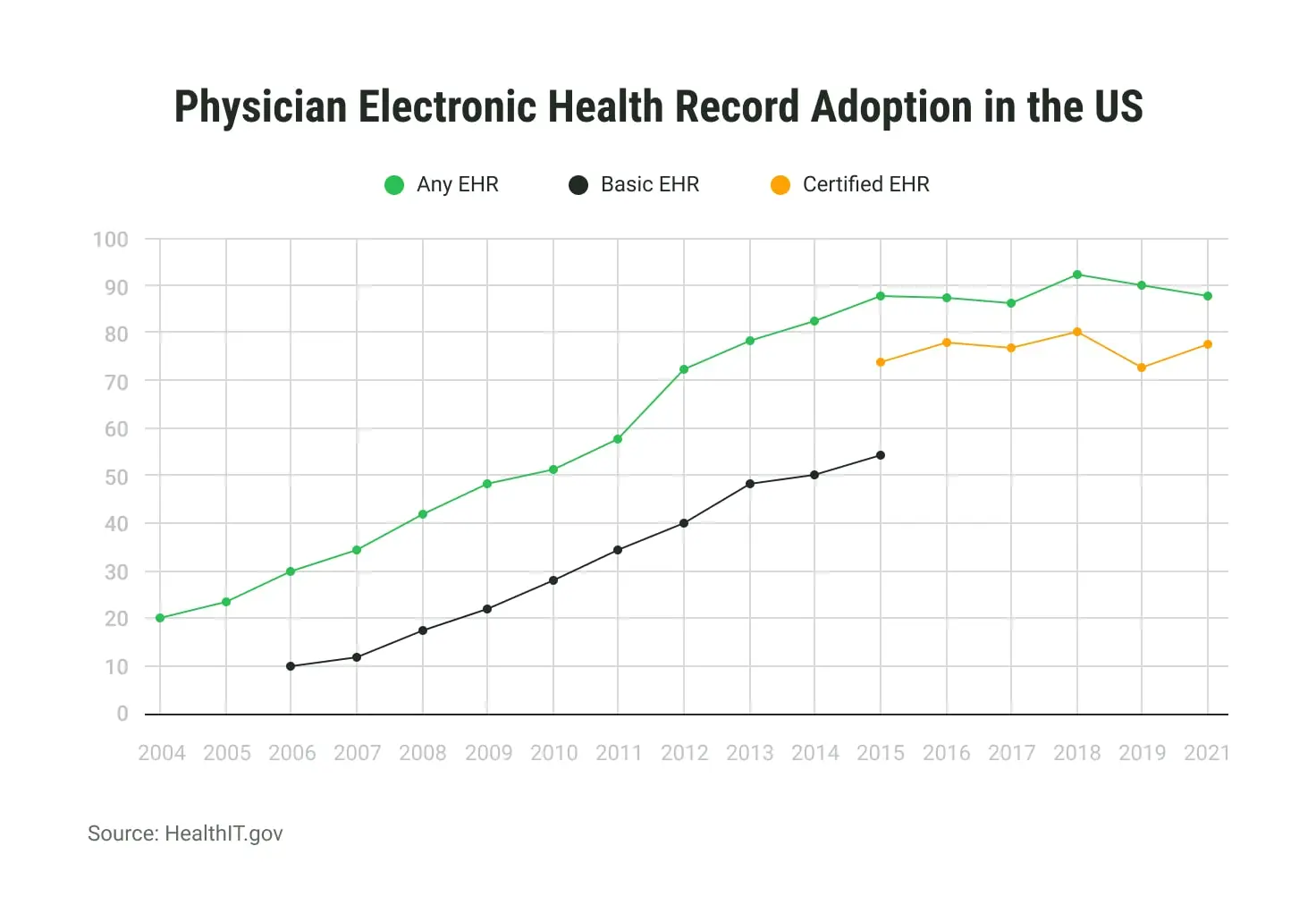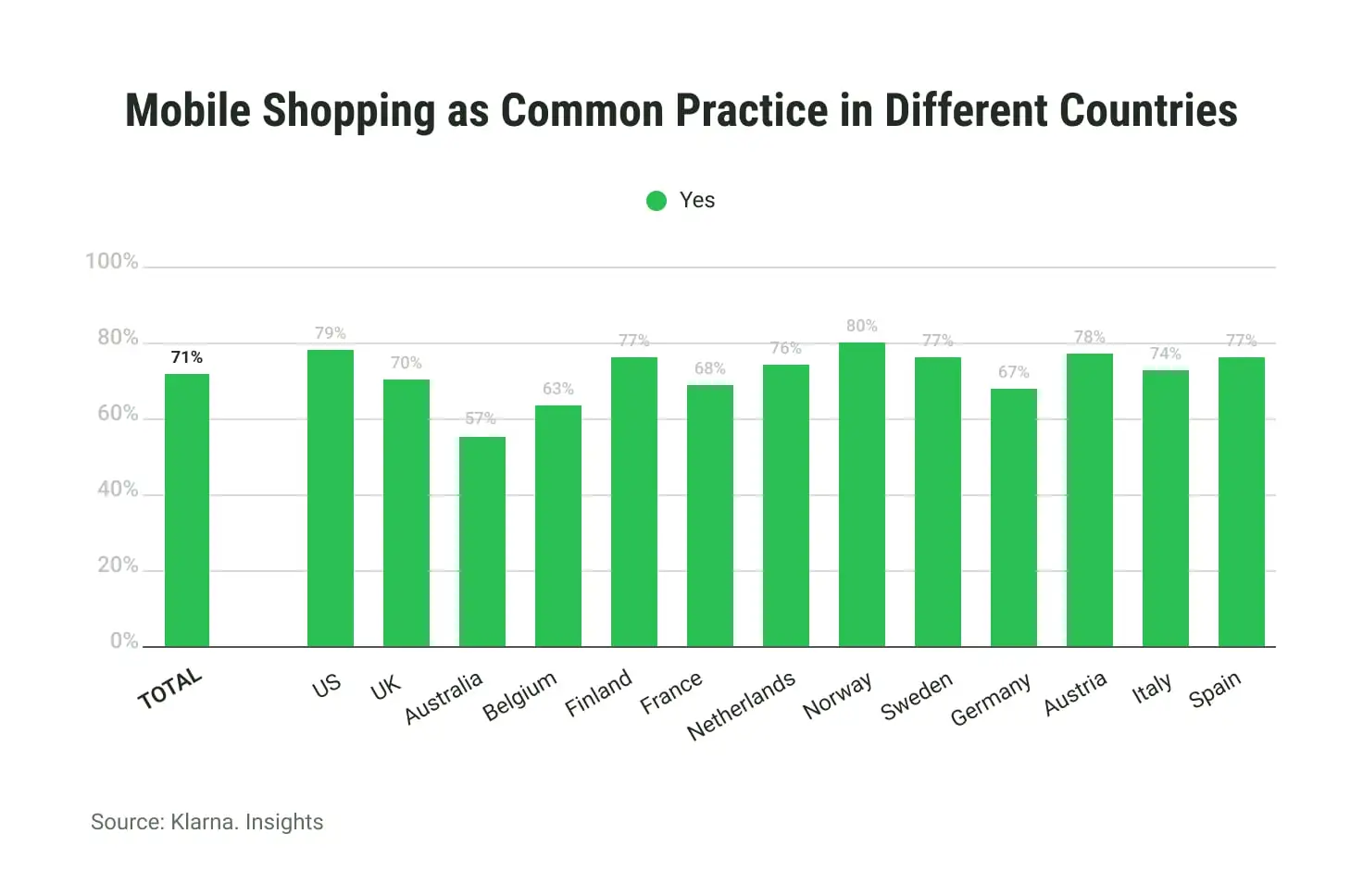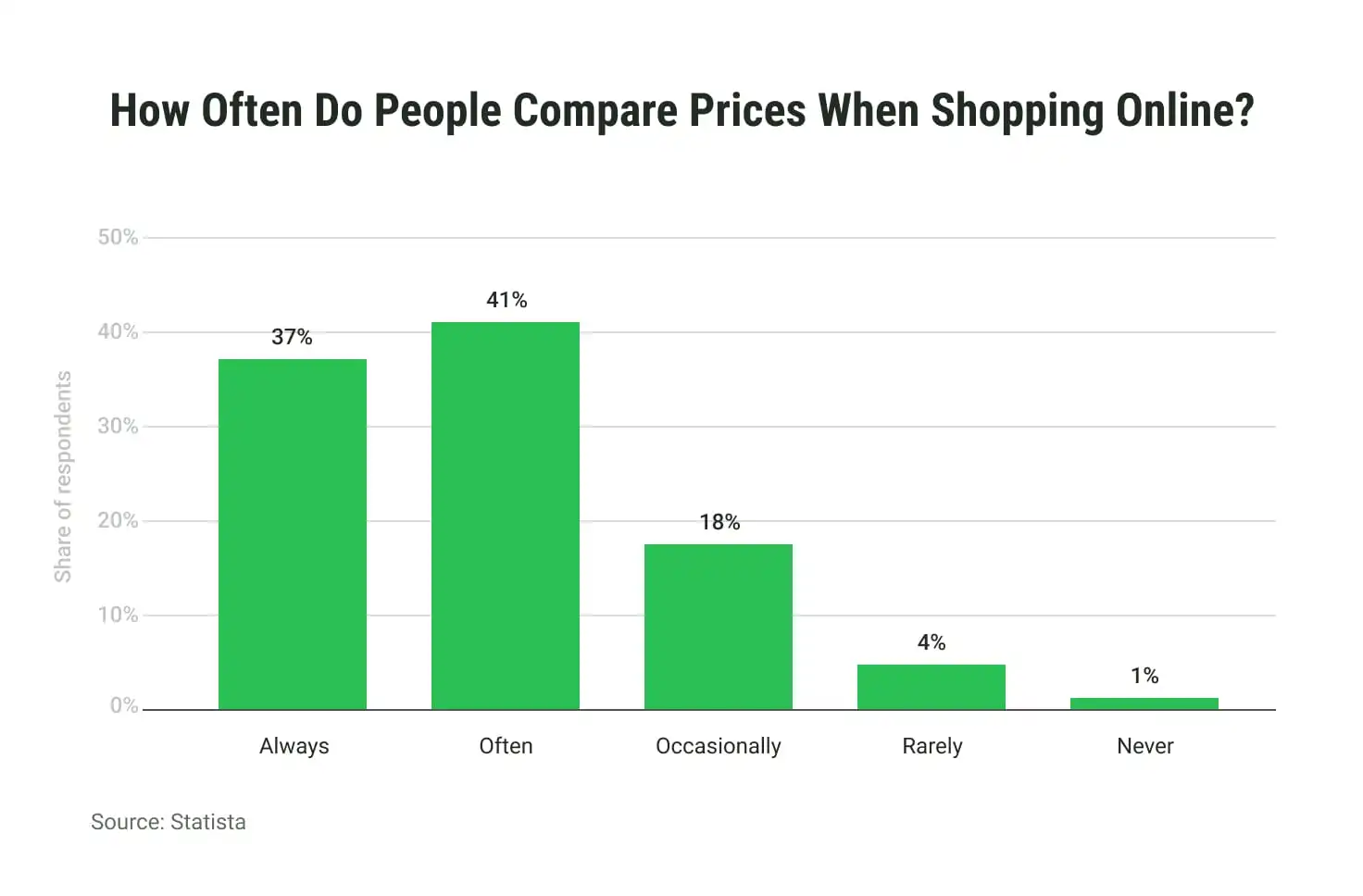12 Mobile App Use Cases in 2025
Table of contents
- 12 Mobile App Use Cases That Will Drive Your Company's Mobility Strategy in 2025
- Leveraging a Mobile Solution in Healthcare
- EMR/EHR (Electronic Health Record)
- Telemedicine applications
- Health management apps
- Wellness apps
- Mobile Apps for E-commerce Businesses
- Retail app
- Inventory management apps
- Price comparison apps
- Virtual try-on apps
- Best e-Learning Mobile App Use Cases
- LMS
- Virtual rooms
- Skill development apps
- Gamified learning apps
- Conclusion
12 Mobile App Use Cases That Will Drive Your Company's Mobility Strategy in 2025
In the modern high-tech world, digital media is an integral part of our lives. At the same time, many businesses believe that having a website is enough to attract new customers and get in touch with the current ones.
However, according to forecasts, the number of mobile device users worldwide will reach 7.49 billion people in 2025. This opens up significant opportunities for companies to use mobile applications to interact with customers, optimize operations, and drive growth.
That is why the advantages of having a mobile application are undeniable for both small and large companies. Statistics confirm this trend: almost half (41%) of small businesses have already developed a mobile application or plan to do so in 2025. One of the key factors in this phenomenon is that consumers are spending more and more time using their mobile devices.
As for medium-sized and large businesses, the information on the percentage of mobile applications varies depending on the industry, location, and other factors. However, as the number of smartphone users continues to grow, we know for sure that 2025 is going to be about mobile apps. So now is the best time to invest in building a mobile solution.
If you want to create a mobile solution but don’t know which one you need for your business, keep reading this article. Our mobile development experts analyzed frequent requests from customers and ongoing trends and are ready to share their insights about mobile app development use cases that can help you drive your business in 2024, depending on your business industry.
Leveraging a Mobile Solution in Healthcare
Healthcare mobile applications have become increasingly popular in recent years. With the development of mobile technology, more people are using mobile apps for healthcare-related purposes, for example, tracking their sports activity, monitoring their medications, and accessing healthcare services.
When it comes to investing in mobile apps, healthcare businesses have many options. Here are just key use cases for mobile apps that could be beneficial to healthcare companies.
EMR/EHR (Electronic Health Record)
An electronic health record application, which is a digital version of a patient's medical history, has grown in popularity over the last decade thanks to government regulations and incentives encouraging healthcare workers to use electronic health data. For example, by 2021, over nine out of ten (88%) office-based physicians in the United States had implemented some form of EHR.
Due to the rapid digitization of the healthcare sector as a whole, the electronic health record (EHR) market has grown significantly. The global EHR market is projected to increase from $30.1 billion in 2025 to $31.7 billion in 2026. This highlights the growing investment in both cloud-based and on-premise EHR solutions.

Now we observe a growing demand for mobile EHR applications. Some healthcare service providers even prioritize the development of a mobile EHR solution over traditional desktop-based EHR systems. This is because mobile EHR solutions enable practitioners to access patient information faster and provide the opportunity to receive remote care services on the go for patients.
As an example, we at Emerline developed a mobile solution with an electronic medical record (EMR) system that meets these needs. Our solution allows patients to schedule appointments in the app and includes a special document editor for practitioners. With features such as schedule management, payment processing, and quick access to medical records, our solution has optimized workflows for healthcare professionals and increased employee retention for our clients.
Telemedicine applications
The COVID-19 pandemic has accelerated the adoption of telemedicine, making healthcare apps even more important. As a survey by McKinsey & Company shows, the number of telemedicine visits in the United States increased from 11% in 2019 to 46% in 2020 due to the COVID-19 pandemic.
The telemedicine market is growing rapidly. By 2026, its volume could reach 15.1 billion US dollars. This dynamic highlights the enormous potential of telemedicine in changing approaches to the provision and receipt of medical care.
Moreover, researchers also discovered that 76% of people who have had a telemedicine visit would use it again in the future. This confirms that mobile apps for telemedicine can become a valuable asset for your business.
Health management apps
Health management apps help users cope with certain medical conditions and improve their health. The most popular direction of health management apps is in the area of chronic disease management. According to the World Health Organization, chronic diseases (such as cardiovascular diseases, cancers, chronic respiratory diseases, diabetes, etc.) cause about 15 million deaths each year in people aged 30-69 years. Forecasts for the future are also disappointing, so it's no surprise that these apps are popular.
Chronic disease management apps often include features such as pill reminders and medication trackers, symptom tracking, and communication with healthcare specialists. Some of the apps also include educational resources on how to manage specific chronic conditions.
At Emerline, we created an iOS application for menopause management that empowers women approaching or going through perimenopause or menopause to track symptoms and monitor their health.
Wellness apps
As more people turn to digital tools to help them manage their health and wellness, wellness apps are gaining popularity. Revenue in the digital health market is expected to reach $508.2 billion in 2026, up from $427.5 billion in 2025. Wellness apps make up a large portion of this amount. So investing in wellness apps can be very profitable.
Unlike health management apps that focus on treating specific diseases, wellness apps target overall well-being, mental health, and emotional balance. They help people lead healthier lives, cope with stress, and improve their well-being. Examples of such applications:
- Mindfulness apps: help develop meditation and relaxation skills, manage stress and anxiety.
- Nutrition apps: provide tools for tracking nutrition, planning menus, and selecting recipes based on individual needs.
- Fitness apps: track physical activity, help achieve fitness goals, offer workouts and exercises.
- Mood and emotion tracking apps: allow you to keep a mood diary, analyze your emotional state, and identify stress triggers.
- Sleep tracking apps: monitor sleep quality, provide recommendations for improving sleep, and help create healthy sleep habits.
Mobile Apps for E-commerce Businesses
E-commerce businesses can benefit from various types of apps depending on their specific needs and goals. It is necessary to consider the target audience and the business development directions when deciding on an app to develop. However, let’s explore the most common mobile app use cases for the e-commerce industry.
Retail app
Statistics show that more than 71% of respondents used a mobile shopping app to make a purchase. As more consumers are using their smartphones to shop online, mobile retail apps have become increasingly popular among the owners of web stores over the past few years.

The most common reasons why people prefer using mobile apps for shopping are time-saving, convenience, easy navigation, and the opportunity to do their shopping anywhere and anytime. A retail app brings benefits not only for users but also for retailers. For example, according to Salesforce studies, 66% of shoppers who use a retailer's mobile app while in-store make a purchase, compared to only 48% of those who don't use the app. So mobile app users are more likely to make a purchase.
Inventory management apps
E-commerce businesses should always track and manage their products to be aware of the amount in stock, their location, price, and how fast they're selling. That’s why an inventory management app is a requirement for successful development.
Bringing an inventory management app to a mobile phone can bring many benefits. This can allow e-commerce businesses to manage their inventory in real time, no matter where they are, enter data on the go without the need for manual data entry or complicated spreadsheets, and ensure that they always have the products the customers want in stock. Ultimately, this will help improve the customer experience and increase customer satisfaction.
Price comparison apps
According to Statista, 8 out of 10 online shoppers compare prices while shopping online. So, a price comparison app can be a good product to invest in.

The solution can help businesses reach new customers, receive access to real-time data about their competitors' prices, and adjust their own pricing strategies. By offering products at competitive prices, businesses can acquire new customers who are looking for the best deals on specific products and stay competitive.
Virtual try-on apps
Throughout the COVID-19 pandemic, brands battled to maintain sales while keeping contact with people to a minimum. This increased the already-growing demand for virtual try-on applications.
Virtual try-on apps allow customers to try on products, such as clothing, eyewear, makeup, and even furniture, virtually before making a purchase. Some vivid examples are Sephora Virtual Artist for trying makeup virtually using the smartphone camera, and IKEA Place, which allows customers to see how furniture will look in their home before purchasing it.
According to recent surveys, 34% of survey participants said that they had tried a virtual try-on, and 85% of those that had tried a virtual try-on enjoyed the experience.
Best e-Learning Mobile App Use Cases
The use of mobile e-learning has grown dramatically in recent years. By 2026, the global e-learning market is expected to reach almost 400 billion U.S. dollars. Let’s figure out which e-learning mobile applications are most in demand today.
LMS
LMS stands for Learning Management System and is used for managing, delivering, and tracking educational courses and training programs. This is the best tool for improving student engagement, delivering personalized learning experiences, saving time and costs, and enhancing reporting and analytics.
An LMS can be used in educational institutions, corporate training, governmental agencies, and healthcare organizations 一 in other words, in every institution that involves any type of learning process. With the shift towards online and remote learning, the demand for LMS continues to increase.
Virtual rooms
The COVID-19 pandemic has led to a surge in demand for remote learning and the development of virtual rooms. A survey by Inside Higher Ed found that 65% of colleges and universities in the United States offered either fully or partially online courses during the 2021-2022 academic year. However, today, compared to the pandemic years, we are not “imprisoned” at home, so mobile virtual rooms are a lifesaver for many users.
A mobile virtual room is an online space on your smartphone. Using the technology, learners and instructors can interact and collaborate in real time, similar to a physical classroom. They provide greater flexibility and convenience for learners and instructors and will likely remain a popular dimension of e-learning in the future.
Skill development apps
People are always looking for convenient and flexible ways to gain new skills and knowledge; that’s why mobile apps for skill development have grown in popularity in recent years. The most popular ones are apps for developing professional skills, such as coding, design, language learning, or project management.
Gamified learning apps
Gamification is the most powerful tool for making e-learning apps more engaging. By developing a learning game or incorporating game-like elements, such as rewards, points, and leaderboards, in an already-created mobile app, you can raise students’ motivation and make the learning experience more fun and interactive.
According to Allied Market research, the global game-based learning market will reach $79.9 Billion by 2031. According to other research, gamified learning is the fastest-growing segment in the global e-learning market. This proves the growing popularity and effectiveness of a gamified learning app and makes it a promising product to invest in.
Conclusion
Mobile applications can open many business opportunities and provide an advantage over the competition in the market. So, now is the time to build a mobile product. We are ready to assist your business in your mobility strategy, covering all the stages of the development process, from idea to implementation. Start transforming your company right now and book a free consultation with our experts.
Updated on Feb 7, 2025





